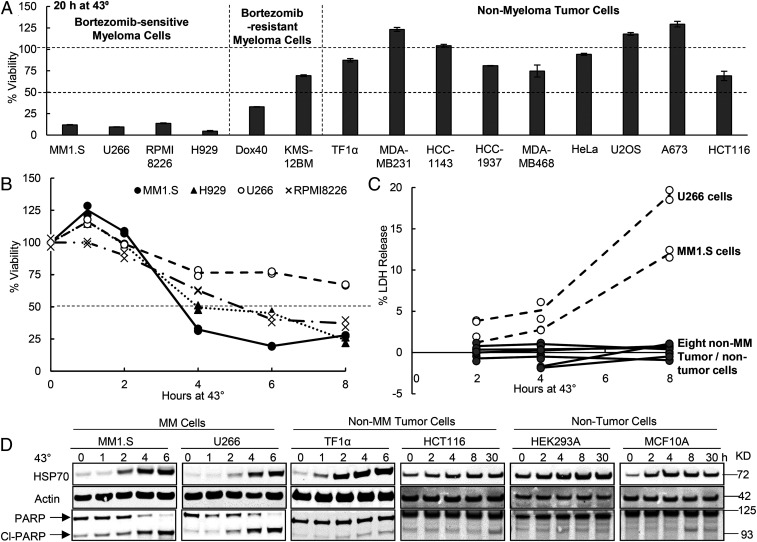Fig. 1.
Myeloma cells are much more susceptible to killing by exposure to 43 °C than other cell lines. (A) Myeloma cells are exceptionally sensitive to 43 °C. Cells growing at 37 °C were switched to 43 °C for 20 h. Cell viability was measured by the MTS assay and normalized to the viability of cells kept at 37 °C for 20 h. Error bars represent SDs (n = 3). (B) At 43 °C, myeloma lines showed decreased viability within 4 h. Myeloma lines were switched to 43 °C, and cell viability was measured by the MTS assay. Data shown are from two biological replicates which yielded similar results. (C) In 8 h at 43 °C, myeloma cell lines (U266 and MM1.S) showed leakage of LDH, a measure of cell death, unlike eight nonmyeloma tumor or nontumor cell lines (HCT116, HAP1, HEK293A, M17, MCF10A, MDA-MB-231, HCC1143, and HCC1937). Data shown are from two biological replicates. (D) Although after exposure to 43 °C, myeloma and nonmyeloma (tumor or nontumor) cells showed a large accumulation of HSP70 (i.e., the heat-shock response), only myeloma cells cleaved PARP, an indicator of apoptosis. Protein levels were analyzed by Western blot.

